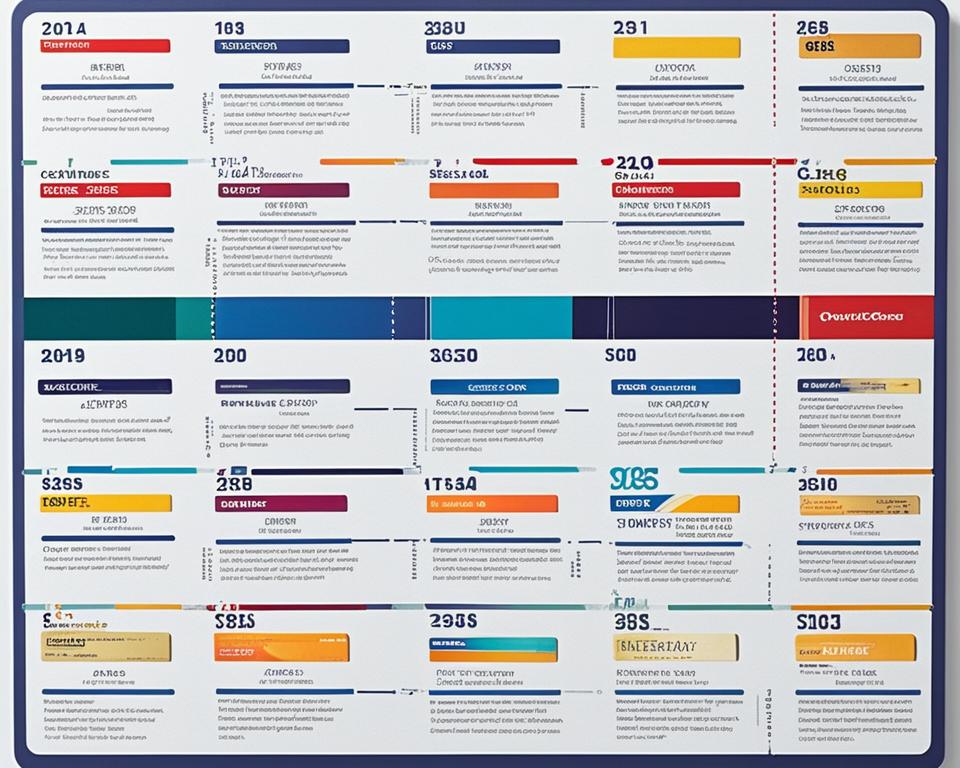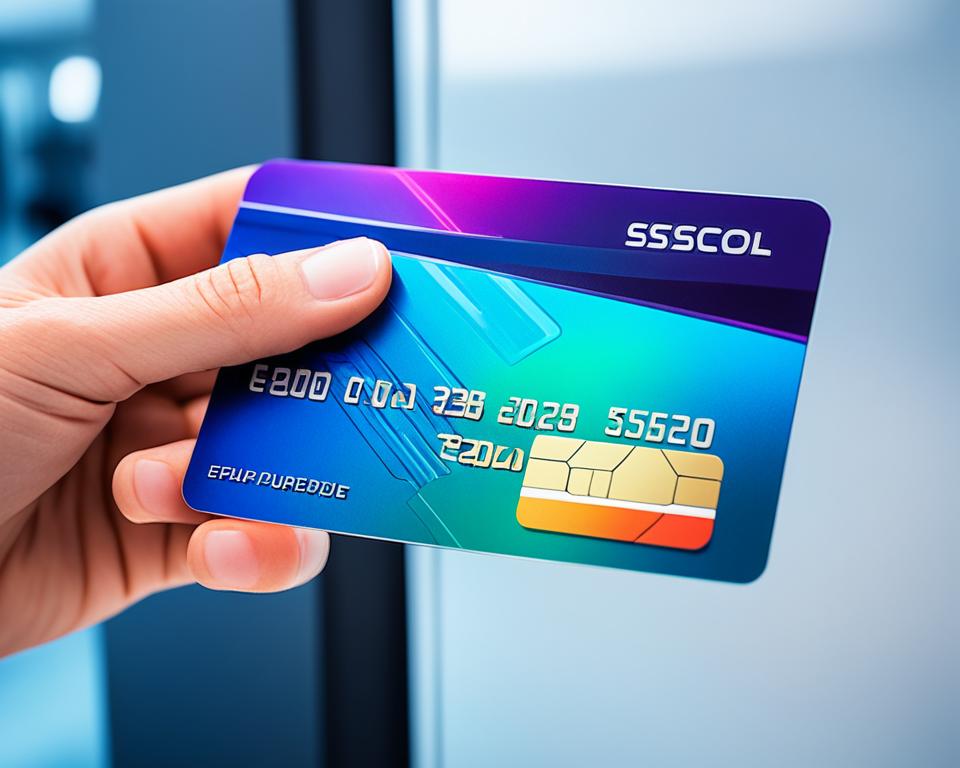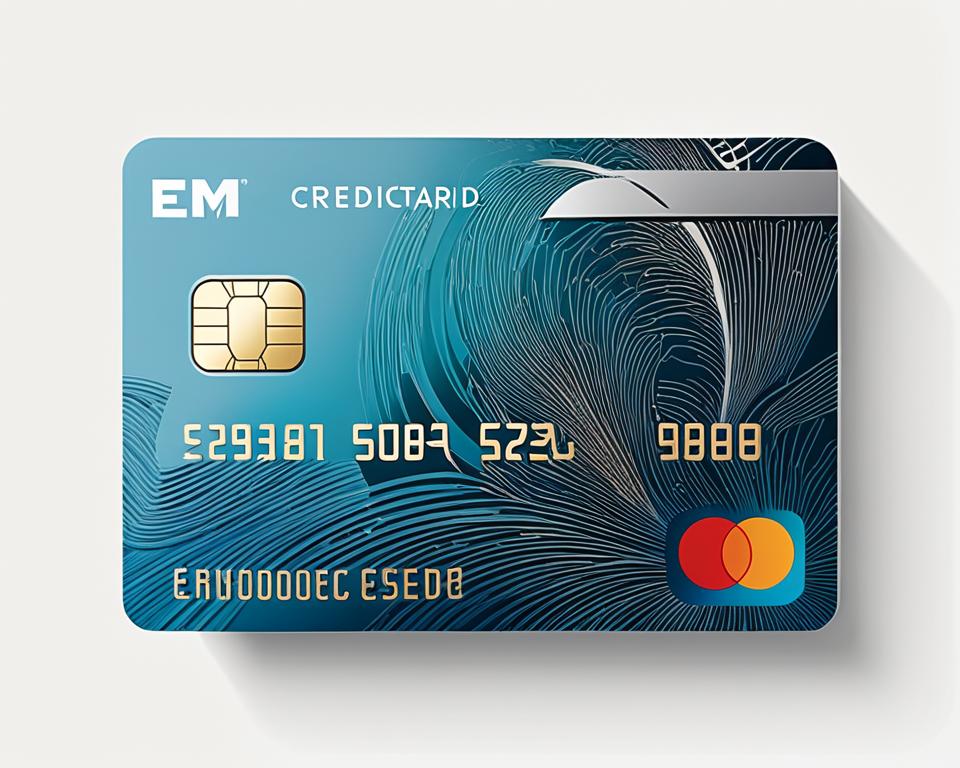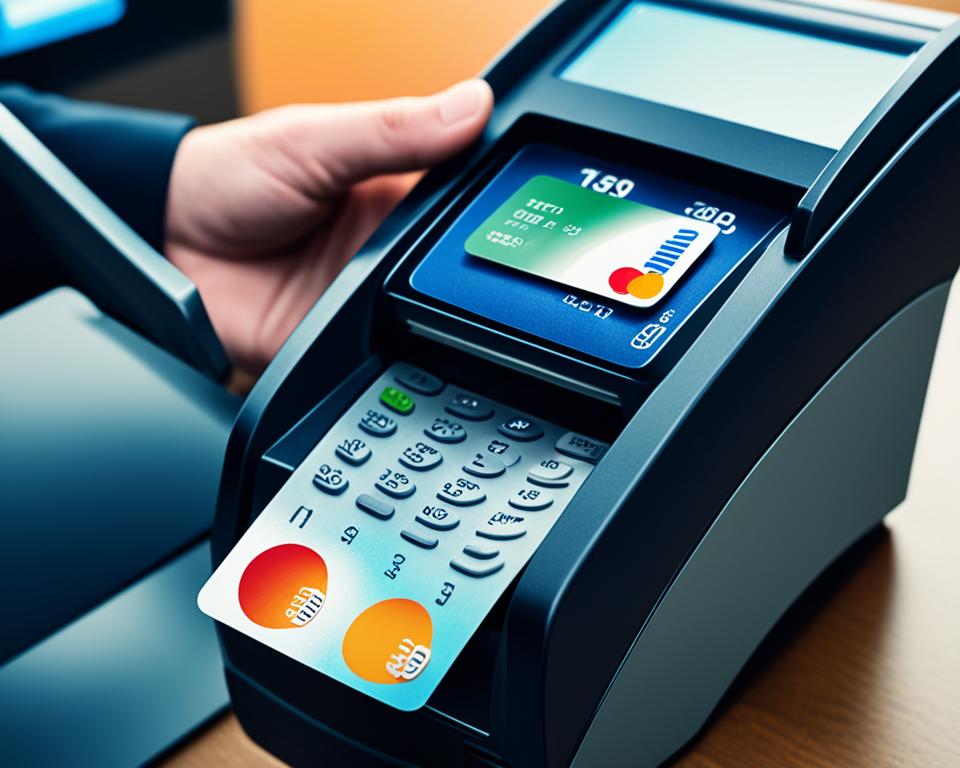Credit cards have become an integral part of modern finance, but their origins date back further than most people realize. The concept of using credit for financial transactions has been around for centuries, with various forms of credit cards being utilized throughout history.
Ancient Mesopotamians used clay tablets as an early form of credit cards, inscribing them with contracts and financial transactions. These clay tablets, dating back almost 5,000 years, laid the foundation for the credit systems we have today.
In the early 1800s, letters of credit were introduced in Europe, allowing individuals to make purchases with borrowed currency. This system facilitated trade and commerce between different regions, setting the stage for the development of modern credit cards.
In the late 1800s, stores in America began issuing paper “loyalty cards” that functioned as credit lines. These cards enabled customers to buy on credit and pay back the balance at a later date, anticipating the convenience credit cards offer today.
Key Takeaways
- The history of credit cards goes back thousands of years, with ancient Mesopotamians using clay tablets as early credit cards.
- In the early 1800s, letters of credit were introduced in Europe, enabling individuals to make purchases with borrowed currency.
- In the late 1800s, stores in America issued paper “loyalty cards” that functioned as credit lines, foreshadowing modern credit cards.
- The first modern credit card, the Diner’s Club Card, was introduced in 1950 and paved the way for the credit cards we use today.
- Credit cards have evolved over time, from clay tablets to plastic cards and now digital payment options.
Ancient History of Credit Cards
The ancient Mesopotamians were pioneers in the realm of credit cards, using clay tablets as an early form of this financial instrument. Dating back almost 5,000 years, these clay tablets played a vital role in facilitating commercial transactions and ensuring the transfer of money and goods. In their inscriptions, the Mesopotamians recorded contracts, business information, and financial transactions, creating a robust credit system for their time.
Ancient commerce heavily relied on credit to enable trade and economic growth. The use of clay tablets as credit cards allowed businesses to participate in the local and international market, forming the backbone of early commercial activities. These clay tablets served as a medium through which individuals engaged in commercial transactions, often incurring debt and establishing credit. This system proved to be widely successful, laying the foundation for future credit systems that evolved and shaped the modern credit card industry.

Evolution of Credit Cards
Credit cards have evolved over time, undergoing significant changes and innovations that have shaped the way we make purchases and manage our finances. The evolution of credit cards can be traced back to the ancient civilizations that utilized clay tablets as an early form of credit.
“The use of clay tablets in ancient civilizations laid the foundation for the credit systems we have today.”
In the early 1800s, a revolutionary development emerged in Europe with the introduction of “letters of credit.” These borrowed currencies allowed individuals to make purchases using foreign currencies, providing a more convenient and efficient means of conducting transactions.
As commerce continued to flourish, stores in America recognized the need for efficient payment methods. In the late 1800s, they began issuing paper “loyalty cards” that functioned as credit lines, allowing customers to make purchases and pay their bills later.
However, it was the introduction of the Diner’s Club Card in 1950 that marked a significant milestone in the development of modern credit cards.
“The Diner’s Club Card paved the way for the major credit card networks we know today.”
Following its success, other major credit card networks, such as American Express, Visa, and Mastercard, emerged, each contributing to the evolution and widespread adoption of credit cards.

| Period | Key Milestones |
|---|---|
| Ancient Times | Use of clay tablets as an early form of credit |
| Early 1800s | Introduction of “letters of credit” in Europe |
| Late 1800s | Issuance of paper “loyalty cards” as credit lines |
| 1950 | Introduction of the Diner’s Club Card |
| Subsequent Years | Emergence of major credit card networks (American Express, Visa, and Mastercard) |
This timeline showcases the progression and development of credit cards, from their humble beginnings to their widespread use in modern society.
Birth of the Modern Credit Card
The birth of the modern credit card can be traced back to the introduction of the Diner’s Club Card in 1950. It all started with a chance encounter when businessman Frank McNamara forgot his wallet while dining out in New York City. Determined not to face such an embarrassing situation again, McNamara devised a solution that would revolutionize the way we make payments.
McNamara partnered with Ralph Schneider and Matty Simmons to create the Diner’s Club Card, which allowed cardholders to charge expenses at participating restaurants and hotels. This concept caught on quickly, and within a year, the Diner’s Club had gained thousands of members.
The success of the Diner’s Club Card laid the foundation for the modern credit card industry. It prompted other financial institutions to take notice and develop their own credit card offerings. American Express soon followed suit, launching its first credit card in 1958.
Bank of America (later known as Visa) entered the credit card market in 1958 with the BankAmericard, which eventually became Visa as we know it today. Mastercard was established a few years later in 1966. These major credit card networks, including American Express, Bank of America (Visa), and Mastercard, played a pivotal role in shaping the modern credit card industry and making it accessible to a wider audience.
The Diner’s Club Card, American Express, Bank of America (Visa), and Mastercard emerged as key players in the birth of the modern credit card industry.
In addition to their convenience, credit cards provided consumers with the flexibility to make purchases without carrying cash. They also offered extended credit lines, making it easier for individuals to manage their finances and make larger purchases over time.
“The birth of the modern credit card industry paved the way for a new era of consumer spending and financial possibilities. It transformed the way people think about money and made everyday transactions more convenient than ever before.”
Invention of Plastic Cards and the Magnetic Stripe
American Express introduced the first plastic credit card in 1959, pioneering the use of durable and convenient plastic materials for credit transactions. Shortly after, in 1961, Diner’s Club followed suit by introducing its own plastic credit cards.
This breakthrough in card manufacturing revolutionized the credit card industry by replacing the previously used paper-based cards. Plastic credit cards offered increased durability and longevity, making them more practical for everyday use. Furthermore, plastic cards allowed for customization and branding, enabling credit card companies to differentiate themselves in the marketplace.
The introduction of plastic credit cards also coincided with the invention of the magnetic stripe technology. IBM engineer Forrest Parry played a pivotal role in this development. By finding a way to store and transfer data using a magnetic strip embedded on the back of the plastic card, Parry transformed the payment landscape.
The magnetic stripe technology paved the way for enhanced convenience and security in credit card transactions. With the magnetic stripe, customer and transaction information could be encoded and stored on the card itself, eliminating the need for manual input during transactions.
Not only did this technology streamline the payment process for both consumers and businesses, but it also enabled new functionalities such as loyalty programs and secure authentication methods.
Today, the magnetic stripe has evolved further, with the introduction of chip-enabled cards, which provide an added layer of security against fraud. However, the invention of the magnetic stripe on plastic cards remains a significant milestone in the history of credit cards, as it laid the foundation for the development of innovative payment technologies.

Magnetic Stripe Technology in Credit Cards
The magnetic stripe consists of a thin layer of magnetic material embedded on the back of a credit card. This stripe contains the cardholder’s account information, which can be read by a card reader during a transaction. The data stored on the magnetic stripe typically includes the cardholder’s name, card number, expiration date, and sometimes additional security information.
“By allowing for the storage and transfer of data on a simple magnetic strip, the invention of the magnetic stripe technology transformed the credit card industry, making transactions faster, more secure, and more accessible.” – Credit Card Innovations, 2022
The magnetic stripe technology enabled quick and convenient payment processing in a variety of industries, from retail and hospitality to transportation and entertainment. It eliminated the need for manual processing and reduced transaction times, enhancing the overall customer experience.
Although the use of magnetic stripes has become less prevalent with the introduction of chip-enabled cards, they remain a key component of many credit cards today, especially in regions where chip technology adoption is still ongoing.
| Advantages of Plastic Credit Cards | Benefits of Magnetic Stripe Technology |
|---|---|
|
|
The Future of Credit Card Technology
While the magnetic stripe technology has played a significant role in the evolution of credit cards, the industry continues to evolve to meet the changing needs of consumers.
The widespread adoption of chip-enabled cards, also known as EMV cards, has provided enhanced security features, reducing the vulnerability to physical card skimming and counterfeit fraud. Furthermore, contactless payment options, such as tap-to-pay, have gained popularity, enabling quick and convenient transactions without the need to swipe or insert a card.
The future of credit cards may see further advancements in technology, including the integration of biometric authentication methods like fingerprint or facial recognition. Additionally, the rise of digital banking and virtual credit cards presents new possibilities for secure and streamlined payment experiences.
As the financial landscape continues to evolve, credit card technology will undoubtedly adapt to meet the demands of a digital-first society, offering innovative solutions that prioritize security, convenience, and flexibility.
Introduction of EMV Chip Credit Cards
EMV chip credit cards, also known as Europay, Mastercard, and Visa chip cards, were introduced in 1994 as a secure payment technology. These cards utilize an embedded chip, rather than a magnetic stripe, to store customer and transaction data. The implementation of EMV chip technology aimed to enhance the security of credit card transactions and reduce fraudulent activities.
Unlike traditional magnetic stripe cards, EMV chip cards provide an added layer of protection against counterfeit fraud. The microchip embedded in these cards generates a unique transaction code for every purchase, making it virtually impossible to duplicate the card or reproduce the transaction information. This makes EMV chip cards significantly more secure than their magnetic stripe counterparts.
EMV chip cards offer two main authentication methods: chip and signature, and chip and pin. In a chip and signature transaction, the cardholder signs the receipt to verify the purchase. On the other hand, chip and pin transactions require the cardholder to enter a personal identification number (PIN) at the point of sale.
In addition to enhanced security, EMV chip cards also support contactless payment options. With the introduction of Near Field Communication (NFC) technology, cardholders can simply tap their EMV chip cards on enabled payment terminals to complete transactions quickly and conveniently.
Benefits of EMV Chip Credit Cards:
- Increased security against counterfeit fraud
- Unique transaction code for each purchase
- Protection against card duplication
- Compatibility with chip and signature or chip and pin authentication
- Contactless payment options for quick and convenient transactions

| Advantages | Disadvantages |
|---|---|
| Enhanced security against counterfeit fraud | Implementation cost for merchants upgrading their terminals |
| Reduced risk of card duplication and unauthorized transactions | Potential longer transaction processing times |
| Support for contactless payment options | Cardholder adaptation to new authentication methods |
| Global interoperability with EMV-enabled terminals | Compatibility issues with non-EMV terminals |
Invention of Credit Scores
The concept of credit scores can be traced back to the 1800s when the Mercantile Agency began creating profiles of borrowers based on their “character and assets.” These profiles provided lenders with insights into an individual’s creditworthiness and served as an early form of credit scoring.
In 1956, Bill Fair and Earl Isaac developed the first credit scoring system through their company, Fair Isaac Corporation, giving rise to the now well-known FICO scores. These scores revolutionized the lending industry by providing a standardized metric for evaluating an individual’s credit health.
Credit scores act as a digital representation of a consumer’s creditworthiness. They take into account various factors such as payment history, credit utilization, length of credit history, and credit mix. Lenders utilize credit scores to assess the risk associated with lending to a particular individual.
The Path to FICO Scores
FICO scores have become the industry standard for assessing creditworthiness. They are used by financial institutions, credit card companies, and other lenders to make informed lending decisions. FICO scores range from 300 to 850, with higher scores indicating lower credit risk.
Other popular credit scoring models, such as the VantageScore system, have emerged as alternatives to FICO scores. However, FICO scores continue to dominate the market due to their long-standing reputation and widespread adoption among lenders.
The Impact of Credit Scores
The invention of credit scores has had a profound impact on the lending landscape. By providing lenders with a standardized metric to evaluate creditworthiness, credit scores have made the lending process more efficient and accessible.
Credit scores have also empowered individuals by allowing them to better understand and manage their credit health. By regularly monitoring their credit scores, individuals can identify areas for improvement and take steps to strengthen their financial standing.
“Credit scores have revolutionized the lending industry by providing a standardized metric for evaluating an individual’s credit health.”
Furthermore, credit scores play a vital role in determining the terms and conditions of loans and credit cards. Individuals with higher credit scores are more likely to qualify for lower interest rates and favorable terms, saving them money in the long run.
In conclusion, the invention of credit scores, particularly FICO scores, has revolutionized the lending industry and empowered individuals to take control of their credit health. As the credit landscape continues to evolve, credit scores will remain an integral tool for lenders and borrowers alike.
Important Credit Card Legislation
Over the years, various credit card legislation has been enacted to protect consumers and regulate the credit card industry. These laws play a crucial role in ensuring consumer protection, fair credit reporting, and responsible lending practices. Let’s take a closer look at some of the most important credit card legislation:
Fair Credit Reporting Act
The Fair Credit Reporting Act, enacted in 1970, promotes accuracy, fairness, and privacy in the collection and use of credit information. It requires credit reporting agencies to provide accurate and complete credit reports to consumers and gives individuals the right to dispute inaccurate information.
Equal Credit Opportunity Act
The Equal Credit Opportunity Act, established in 1974, prohibits lenders from discriminating against consumers based on gender, race, color, religion, national origin, marital status, age, or receipt of public assistance. This legislation ensures that all individuals have equal access to credit opportunities.
Credit Card Accountability Responsibility and Disclosure Act
The Credit Card Accountability Responsibility and Disclosure Act, commonly known as the CARD Act, was passed in 2009 to provide additional protection for credit card holders. This legislation limits certain fees and interest rate changes, requires clearer disclosure of credit terms and conditions, and restricts predatory practices by credit card issuers.
These credit card legislations have had a significant impact on protecting consumers’ rights and promoting transparency and fairness in the credit card industry.
Remember, staying informed about credit card legislation can help you make better financial decisions and ensure that your rights and interests as a consumer are protected.
| Legislation | Year Enacted | Key Provisions |
|---|---|---|
| Fair Credit Reporting Act | 1970 | Promotes fair and accurate credit reporting, allows consumers to dispute inaccurate information |
| Equal Credit Opportunity Act | 1974 | Prohibits discrimination in credit transactions based on gender, race, color, religion, national origin, marital status, age, or receipt of public assistance |
| Credit Card Accountability Responsibility and Disclosure Act | 2009 | Limits certain fees and interest rate changes, requires clear disclosure of credit terms, and restricts predatory practices by credit card issuers |
These credit card legislations have played a vital role in protecting consumers and ensuring a fair and transparent credit card marketplace.
The Future of Credit Cards
As technology continues to advance, the future of credit cards is set to undergo significant changes. With the rise of digital banking and virtual cards, traditional physical credit cards may gradually become obsolete. Let’s explore the potential directions the credit card industry is heading towards:
Digital Banking
The advent of digital wallets and mobile payment options marks a new era in banking and financial transactions. The convenience and flexibility provided by these technologies are reshaping the way people interact with their money. Users can now make seamless transactions using their smartphones or other digital devices, eliminating the need for physical credit cards. This revolution in digital banking is gaining popularity as it offers enhanced convenience and security.
Virtual Credit Cards
Virtual credit cards are another promising development in the credit card industry. These cards generate unique numbers that can be used for online purchases, adding an extra layer of security. With virtual cards, consumers no longer need to provide their actual credit card information every time they make an online transaction. Instead, they can use a temporary card number that is linked to their actual credit card, reducing the risk of fraud or unauthorized charges. This technology provides heightened security and convenience for online shoppers.
By embracing digital banking and virtual credit cards, the industry is striving to enhance the user experience and improve security measures. These innovations aim to provide consumers with greater convenience, flexibility, and peace of mind.
The future of credit cards is likely to witness further advancements in payment technology. As consumer preferences evolve and the demand for seamless, secure, and contactless transactions increases, the industry will continue to innovate and adapt. The traditional credit card may transform into a purely digital form, making way for more advanced and efficient financial tools.
Conclusion
Credit cards have undoubtedly revolutionized the way we make purchases and manage our finances. From the ancient clay tablets used by the Mesopotamians to the modern plastic cards and digital payment options available today, credit cards have evolved significantly over time.
Throughout history, various milestones, such as the introduction of the Diner’s Club Card and the invention of the magnetic stripe, have played a crucial role in shaping the credit card industry. These advancements have made credit cards more accessible, secure, and convenient for consumers.
Moreover, the credit card industry has been influenced by legislation aimed at protecting consumers and regulating the market. Acts such as the Fair Credit Reporting Act, the Equal Credit Opportunity Act, and the Credit Card Accountability Responsibility and Disclosure Act have ensured fair practices and transparency in credit transactions.
As we look to the future, the credit card industry is expected to continue adapting to meet the changing needs of consumers and advancements in technology. Digital banking, virtual credit cards, and mobile payment options are likely to play a significant role in shaping the future of credit cards.
FAQ
When were credit cards invented?
Credit cards have a long history, with the first modern credit card, the Diner’s Club Card, being introduced in 1950.
What were the ancient credit cards made of?
In ancient times, credit cards were made of clay tablets that were inscribed with contracts and financial transactions.
How did ancient credit cards work?
Ancient credit cards, in the form of clay tablets, were used to facilitate official transfers of money and goods, often involving debt and used for commercial purposes.
How did credit cards evolve over time?
Credit cards evolved from clay tablets to borrowed currency called “letters of credit” in the 1800s to paper “loyalty cards” as credit lines in the late 1800s, ultimately leading to the development of the modern credit card.
Who invented the first modern credit card?
The first modern credit card, the Diner’s Club Card, was introduced in 1950 by businessman Frank McNamara.
What other major credit card companies emerged after the Diner’s Club Card?
American Express, Bank of America (later known as Visa), and Mastercard are some of the major credit card companies that emerged after the Diner’s Club Card.
When were plastic credit cards invented?
American Express issued the first plastic credit card in 1959, followed by the Diner’s Club introducing a plastic version of its cards in 1961.
How did the invention of the magnetic stripe impact credit cards?
The invention of the magnetic stripe by IBM engineer Forrest Parry allowed for the storage and transfer of data with a credit card, revolutionizing the credit card industry.
When were EMV chip credit cards introduced?
EMV chip credit cards were introduced in 1994 as a secure payment technology.
What are credit scores and who invented them?
Credit scores are digital representations of a consumer’s credit health. Bill Fair and Earl Issac developed the first credit scoring system through the Fair Isaac Company, giving rise to the FICO scoring system.
What are some important credit card legislations?
Important credit card legislations include the Fair Credit Reporting Act (1970), the Equal Credit Opportunity Act (1974), and the Credit Card Accountability Responsibility and Disclosure Act (2009).
What does the future hold for credit cards?
The future of credit cards is likely to shift towards digital banking and virtual cards, with the rise of digital wallets, mobile payment options, and the possibility of further innovations in payment technology.





